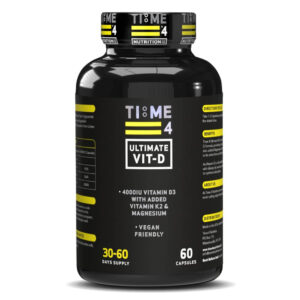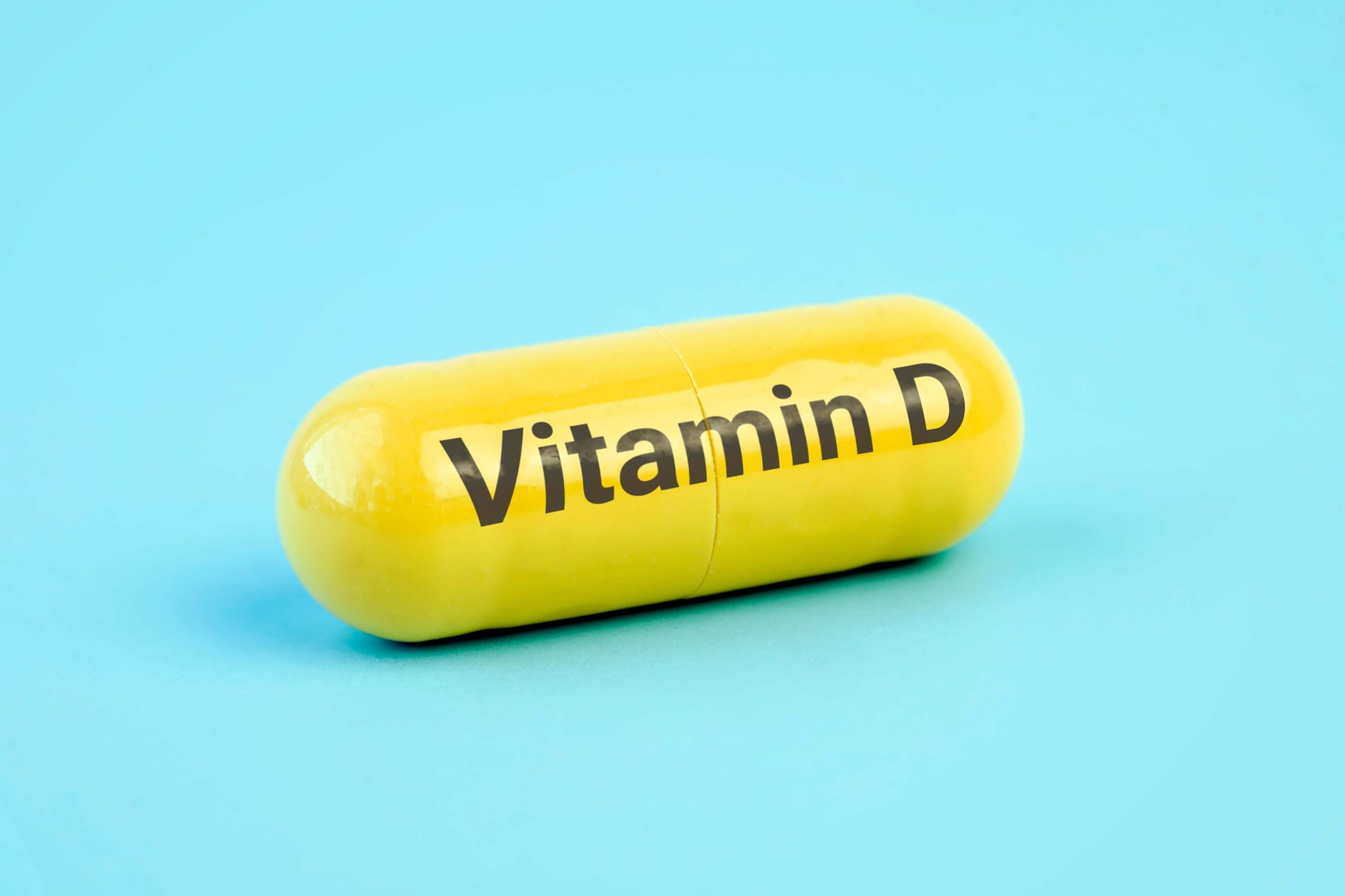Vitamin D for Fat Loss & Muscle Gain
Vitamin D for Fat Loss & Muscle Gain
Vitamin D for Fat Loss & Muscle Gain – What Does the Science Say?
Vitamin D was discovered in the early 20th century, and since then, has been used to prevent and treat rickets, a painful childhood disease which results in weak, soft bones. However, addressing rickets was only the beginning of research into vitamin D, which continues today and consistently demonstrates many other ways in which it can benefit our health such as reducing inflammation as well as modulation of such processes as cell growth, neuromuscular and immune function, glucose metabolism and maintaining the structure of teeth. It can also help to reduce depression, aid weight loss, and play a role in muscle growth and repair.
In recent years, science has also demonstrated the positive affect vitamin D has on various aspects of athletic performance. For example, over 1000 vitamin D–responsive genes have been identified, which affect protein synthesis, muscle size and strength, reaction time, balance, coordination, and endurance.
Despite the importance of vitamin D being well acknowledged, deficiency is very common. In fact, it is estimated that about 1 billion people worldwide have low levels, and the problem seems to be getting worse, as deficiency rates have doubled from 1994 to 2004. This figure has been shown to be as high as 93% in black and ethnic minority populations. Although there is some scientific evidence that people who exercise regularly are more likely to have high vitamin D levels, deficiency is common in athletes. Since vitamin D is actively used in many metabolic pathways, it is possible that athletes may require an increased intake to assure adequate availability and storage for optimal performance.

Vitamin D for Fat Loss & Muscle Gain
Vitamin D and body composition
The role of vitamin D in body composition, i.e., the ratio of muscle and fat, and has been the subject of a number of studies recently. For example, Vitezova et al., (1) found that individuals with an adequate vitamin D status had a lower level of body fat in comparison to those who were vitamin D deficient.
A new study by Magalhães and colleagues (2) has further investigated the relationship between vitamin D status and body composition with some interesting results.
Reason for the study
The authors suggest that there has been a growing interest in understanding the relationship between vitamin D and body composition, as evidenced by the association between vitamin D deficiency and obesity. Most studies rely on conventional measures such as body mass index (BMI), waist circumference, and body fat percentage to assess body composition. However, these often overlook other important variables related to the distribution of body fat.
Similarly, there is evidence of a link between vitamin D and skeletal muscle mass, with vitamin D deficiency contributing to a reduction of muscle mass as well as decreased strength and muscle function. Consequently, understanding these issues is essential for a comprehensive assessment of the influence of vitamin D on body composition and muscle health.
Study design
The study involved 86 women aged 20-49 years. Participants were categorised based on their vitamin D status and further divided according to body mass index, with normal weight, overweight and obese individuals included in the sample.
Vitamin D levels were assessed, which showed that 63.70% of participants exhibited levels categorised as inadequate. A comprehensive battery of measurements was employed to assess body composition.
Results
The results showed a negative correlation with vitamin D status and body fat, especially visceral fat (fat stored within the abdominal cavity), and a positive correlation with muscle mass. In short, those participants with low levels of vitamin D had higher levels of body fat, particularly in the abdominal area, and less muscle. While those with higher vitamin D levels had greater muscle mass and less fat.
The study provides an interesting insight into the underlying physiological mechanisms responsible for the results.

Vitamin D for Fat Loss & Muscle Gain
Bodyfat and vitamin D
The authors suggest that although these findings indicate a relationship between vitamin D and bodyfat, caution should be exercised when interpreting these results as they can go both ways. That is, excess body fat can lead to lower vitamin D concentrations. On the other hand, lower vitamin D concentrations can result in excess body fat.
A number of factors may be responsible for these findings. Firstly, fat acts as the main reservoir of vitamin D in the body, which decreases its bioavailability for use by the body. Volumetric dilution is another possible cause of low vitamin D concentrations in individuals with obesity. This means that as vitamin D is distributed in a greater volume of serum (a liquid component of blood), muscle, fat, and liver, a greater amount of vitamin D is required to saturate these deposits, thereby decreasing the amount available for transport around the body.
It was also shown that low concentrations of vitamin D are associated with increased visceral fat which, in turn, is associated with increased inflammation. This increases the risk for a variety of health issues such as type 2 diabetes, obesity, and cardiovascular disease. So, it appears that obesity drives inflammation, but inflammation also drives obesity. The two are interconnected, creating a cycle that makes it challenging to lose weight. Interestingly treatment with 1,25(OH)2D (the active form of vitamin D) has been shown to reduce the inflammatory response in fat tissue through the inhibition of various signalling pathways.

Muscle mass and vitamin D
Vitamin D deficiency in skeletal muscle can lead to alterations in metabolic pathways, ultimately resulting in decreased protein synthesis, muscle atrophy, and mitochondrial dysfunction. Mitochondria are tiny organs known as the ‘powerhouses of the cell’ as they provide 90% of the energy needed to sustain life. They are essential for the conversion of food we eat into ATP, which can then be used by the cells of the body to fuel their various functions including muscle contraction.
The take home message
You may be thinking as interesting as the results of this study are, as I’m not a woman aged 20-49 years, are they really relevant to me? While it is true that the more similar we are to the subjects in a study, the more relevant the results are likely to be, it is important to understand that this is just one of a growing number of papers which demonstrate the vital role vitamin D plays in helping us to maintain a healthy body composition by promoting the maintenance and growth of muscle and reducing the accumulation of body fat.
So important is vitamin D for our health and athletic performance and so common is deficiency, that it is one of the very few vitamins that we are actively encouraged to supplement rather than rely solely on obtaining it from our diet. However, before you rush off to buy a vitamin D supplement, it is important to understand that vitamin D is very much a ‘team player’, as it works closing with other key micronutrients to perform its numerous roles most effectively. For example, the body depends on magnesium to convert vitamin D into its active form and is critical for making vitamin D bioavailable. In short, without magnesium present, vitamin D is stored in the body and not used. Similarly, vitamin K2 increases the enzymes that activate vitamin D made proteins responsible for regulating where calcium is deposited in the body. This not only supports skeletal health, but also prevents the deposition of calcium in soft tissues, including the calcification of the arteries, which contributes to arterial disease.
So, even if you’re not a woman of a certain age, the evidence is clear: maintaining appropriate levels of vitamin is essential for maintaining healthy body composition, in addition to numerous other benefits.
Just click here to learn more about vitamin D and how it can benefit you.

